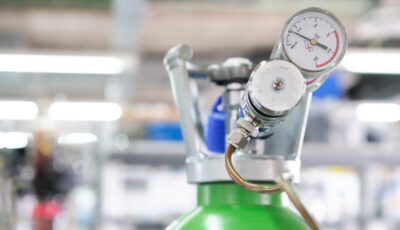Starting Up A Bed After Change Out – Ethanol Dehydration Units
Start Up an Ethanol Dehydration Unit After a Change Out or for Initial Commissioning
What to Know About Start Ups
Before starting a ethanol dehydration unit, or ethanol bed, there are some common precautions that the team should be aware of. As normal, be cautious not to bump or lift the bed from rapid pressure fluctuations and avoid massive liquid slugs, which could stir the bed. The most serious problem to be aware of is an uncontrolled temperature rise from the heat of adsorption.
Heat is released when components of the flowing stream is adsorbed. This temperature increase is brought by the heat of condensation within the pores of the zeolite because all adsorbed components within the sieve crystals condense to liquid phase. A second heat release occurs from the intermolecular frictional heat known as the heat of wetting. Combined, the heat release can reach up to 1,800 BTU per pound of adsorbed water or 700 BTU per pound of coadsorbed ethanol.
During initial start up after a new loading, the bed can get very hot when the first feed is sent to the dehydration units. In a perfectly sealed and insulated system, one could add enough water to fresh molecular sieve to saturate it (24 wt%), and could raise the bed by 940˚F. The beds would not actually reach this temperature because of boiling, venting, insulation leaks, etc., but steps have to be taken to prevent the beds from getting too hot and causing damage to valves, gauges, thermometers, or more.
The 3A molecular sieve crystals in the sieve beads, such as EthaDry, started as a 4A, then underwent an ion exchange to create a 3 Angstrom crystal, but not all of the 4A crystals can be transformed into 3A crystals. To keep the temperature during the start up process more controlled, 200 proof ethanol often first used to be saturate the residual 4A crystals in the molecular sieve beads. This will rid the heat contributed from the coadsorption of ethanol and ease the process of saturating the 3A crystals with water.
High heats can cause ethanol to rapidly decompose, the exact temperature is unknown, but is sure to be above most pressure vessels coding rated at 600˚F, so it seems reasonable to suggest that temperatures must never exceed 600˚F at any time.
Method
Every plant builder has their own version of a start up procedure and every plant is unique, so these are some of the basic tips that work in most situations and it is recommended to contact the your plant builder and engineering company for an official start up procedure. In every case, the objective is to preload the molecular sieves with water and ethanol, without getting any violent temperature runaways, while keeping the beds hot enough that the ethanol stays in vapor phase.
The easiest way to start is with 200 proof ethanol. It is vaporized (310-320˚F, 20-40 PSIG) and sent to the beds at slowly increasing rates up to 75% of the design feed rate. It is certainly unwise to have a flammable vapor at high temperature in the presence of oxygen so it is imperative to purge the air from the system. It is easiest to remove the air from the system under a vacuum before starting the 200 proof flow.
The 200 proof ethanol is condensed, fed back to the vaporizer, and recycled back through the beds, until the bed temperatures have stabilized to around 350˚F. This process will remove the heat that could be contributed from the heat of adsorption of ethanol and will make it easier to adjust the bed. Once the bed has stabilized, continue to recalculate start up, adding 190 proof at 10-20% of the normal feed rate and try to hold the bed temperatures to 500˚F or less by controlling the feed addition; some liquids will have to be drained from the loop. Typically, the least complicated way of controlling the temperature is by adjusting the wet feed rate. As a last resort, the pressure can be dropped and will help to lower the temperature.
The recirculating feed rate should always be high enough to maintain turbulent flow through the molecular sieve beads. Otherwise the heat transfer properties are lowered and some very hot spots can develop in the bed. One way to be assured of turbulent flow is by measuring the pressure drop across the sieve beads, and it must be at least 0.01 psi per foot of bed.
If there is no 200 proof ethanol available for start up, 190 proof ethanol can be used, and it’s recommended to utilize the 200 proof produced from the first feed that exits the dryer. This process requires extra caution until a low water content stream is available for recirculation as the bed will be more actively adsorbing a saturated feed stream.
Continue to recirculate vaporized wet feed, diluted with 200 proof recycle, until the bed temperature has again stabilized around 350˚F. Repeat this procedure on the other beds. It may be desirable to keep a small amount of hot feed flowing through the first bed to minimize condensation and allow for an easy startup with wet feed.
DISCLAIMER NOTICE
The above information is for general reference and guidance purposes only, Hengye does not accept any responsibility for actions based on the information above. Each reader/operator must consult equipment/operation manuals, the plant engineering/design company, and the plant/equipment builder before performing any work.
Authored By:
Mark Binns
Hengye Inc.
Houston, Texas
info@hengyeinc.com
1-844-308-3271


